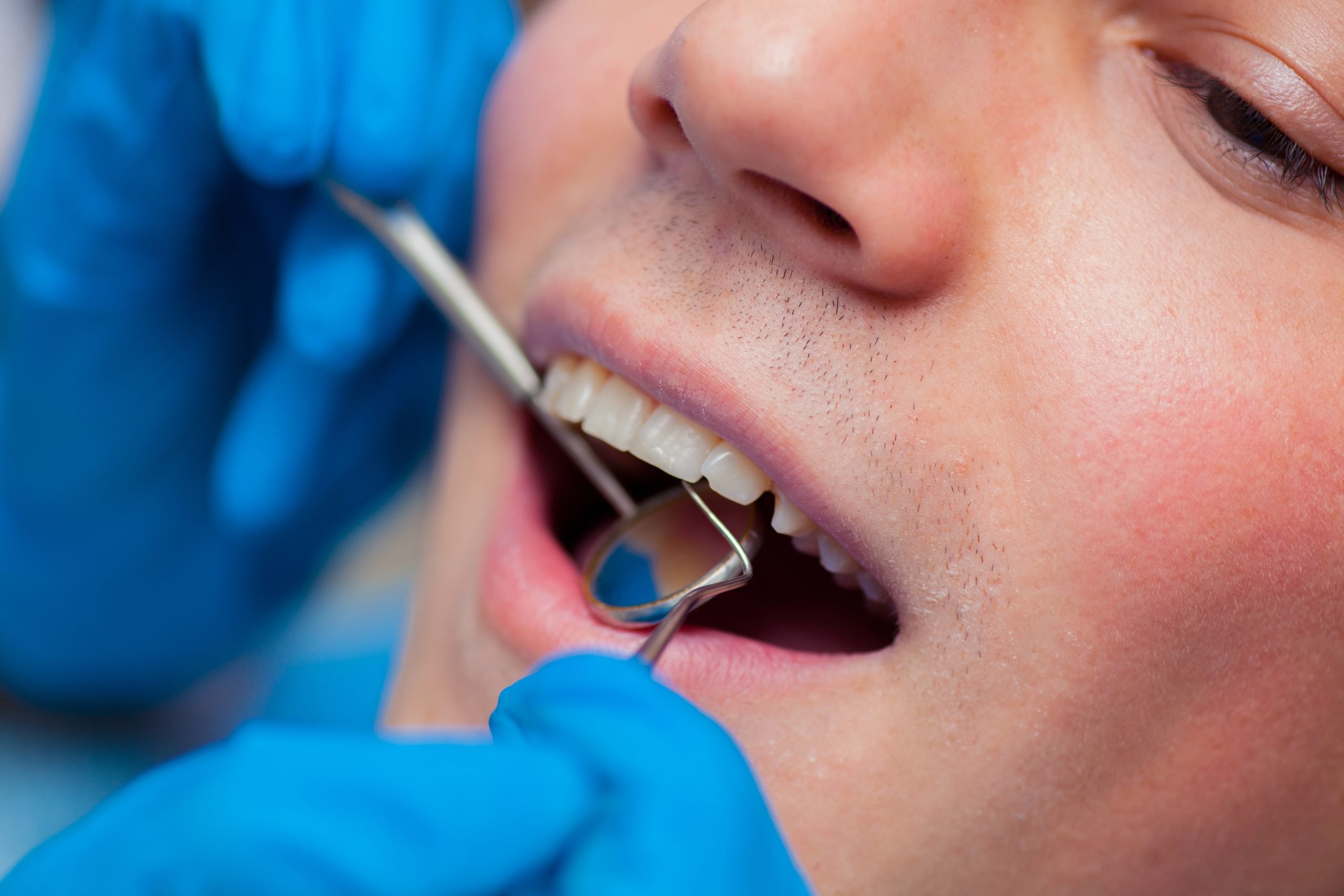Periodontitis, a severe form of gum disease, can lead to significant dental issues if left untreated. It affects the gums and the bone supporting the teeth, potentially resulting in tooth loss. Understanding periodontitis’s signs and treatment options is crucial for maintaining optimal oral health.
At Somerset Dental, we are dedicated to educating our patients about this condition and providing effective treatment solutions. In this article, we explore the symptoms of periodontitis and discuss various treatment methods.
Recognizing the Signs of Periodontitis
Periodontitis progresses through distinct stages, each with specific symptoms that signal the severity of the condition. Recognizing these signs early is crucial to prevent further complications and irreversible damage. Let’s explore the early and advanced periodontitis symptoms to help you promptly identify and address this condition.
Early Symptoms
Identifying periodontitis early can prevent more severe complications. Here are some common early signs to watch for:
- Red, Swollen Gums: One of the first signs of periodontitis is red, swollen gums. This inflammation occurs as a response to bacterial infection.
- Bleeding Gums: Gums that bleed easily during brushing or flossing are another early indicator. This bleeding is a sign that your gums are unhealthy and require attention.
- Persistent Bad Breath: Persistent bad breath or a bad taste in the mouth can be a sign of periodontitis. This occurs due to the buildup of bacteria and plaque in the mouth.
Advanced Symptoms
As periodontitis progresses, the symptoms become more severe and can include:
- Receding Gums: Gum recession, where the gums pull away from the teeth, exposing more of the tooth or its root, is a common symptom of advanced periodontitis.
- Loose Teeth: As the supporting bone and tissues are damaged, teeth may become loose or shift. This can affect your bite and make eating and speaking difficult.
- Pus Between Teeth and Gums: The presence of pus between your teeth and gums is a clear sign of infection and requires immediate dental care.
Exploring Treatment Solutions
Depending on the severity of periodontitis, various solutions are available. Early intervention typically involves non-surgical methods, while more advanced cases may require surgical procedures. Here’s an overview of the treatment options available to combat periodontitis and restore oral health:
Professional Cleaning
The first step in treating periodontitis is a thorough professional cleaning. This removes plaque and tartar buildup from the teeth and beneath the gums.
Scaling and Root Planing
Scaling and root planing is a deep-cleaning procedure that involves scraping off tartar from above and below the gum line and smoothing out rough spots on the tooth root. This helps the gums reattach to the teeth and reduces pocket depth.
Medications
In some cases, medications may be used alongside other treatments to control infection and pain.
Antibiotic Gels and Mouthwashes
Antibiotic gels and mouthwashes can help reduce bacteria and inflammation in the mouth. These are often used after scaling and root planing to maintain gum health.
Oral Antibiotics
In more severe cases, oral antibiotics may be prescribed to combat infection and prevent further spread.
Surgical Treatments
Surgical treatments may be necessary for advanced periodontitis to restore gum and bone health.
Flap Surgery
Flap surgery involves lifting the gums to remove tartar deposits from deep pockets. The gums are then sutured back in place to fit snugly around the teeth.
Bone and Tissue Grafts
Bone and tissue grafts are used to regenerate lost bone and gum tissue. This can help stabilize teeth and improve the overall appearance of the gums.
Preventing Periodontitis
Preventing periodontitis is essential for maintaining healthy gums and overall oral health. Adopting effective oral hygiene practices and making healthier lifestyle choices can significantly reduce your risk of developing this serious gum disease. Some strategies to help you keep your gums healthy and prevent periodontitis include:
Good Oral Hygiene Practices
Maintaining good oral hygiene is crucial in preventing periodontitis. Brush your teeth at least twice a day with fluoride toothpaste, floss daily, and use an antibacterial mouthwash to keep your gums healthy.
Regular Dental Check-ups
Regular dental check-ups and cleanings at Somerset Dental are essential for catching early signs of gum disease and preventing periodontitis. Schedule visits every six months or as recommended by your dentist.
Healthy Lifestyle Choices
Adopting a healthy lifestyle can significantly impact your oral health. Avoid tobacco use, eat a balanced diet, and manage stress to keep your immune system strong and protect your gums from infection.
Understanding the signs and treatment options for periodontitis is vital for maintaining healthy gums and preventing tooth loss. At Somerset Dental, we are committed to providing comprehensive care to help you achieve and maintain optimal oral health. If you notice any signs of periodontitis or have concerns about your gum health, don’t hesitate to contact us for an appointment. Let’s work together to keep your smile healthy and beautiful.
How often do you go to a dentist for professional cleanings? What’s your favourite antibacterial mouthwash? Share your thoughts with our readers in the comments below.





